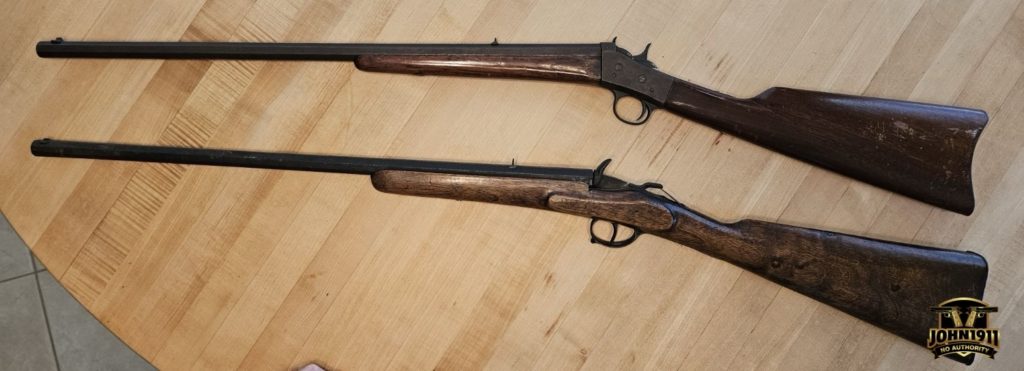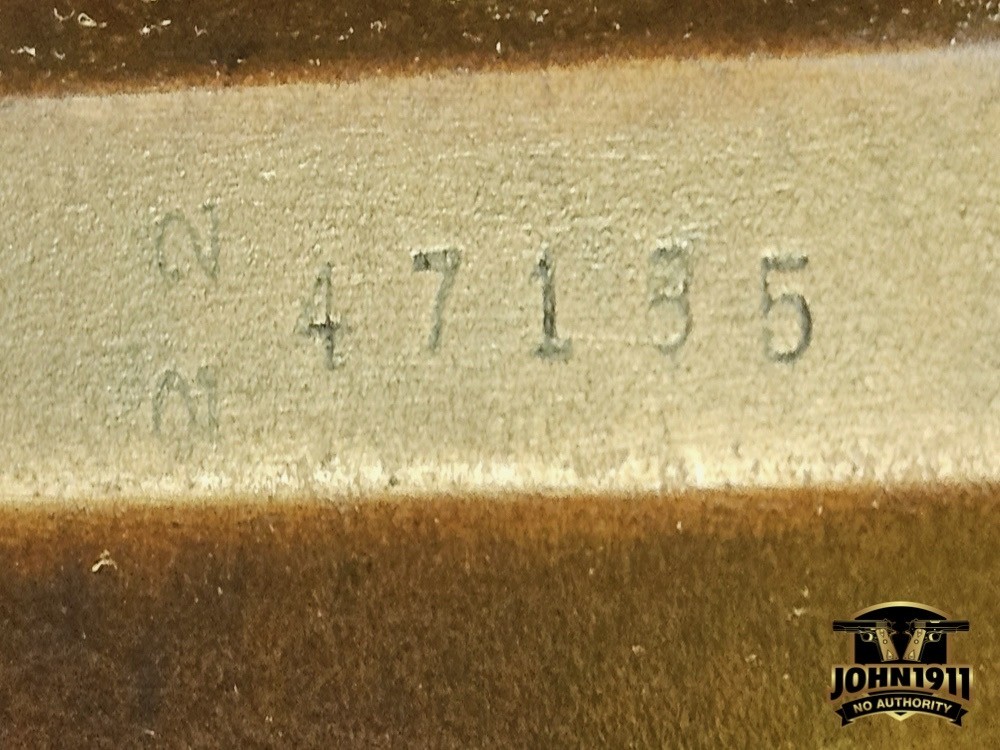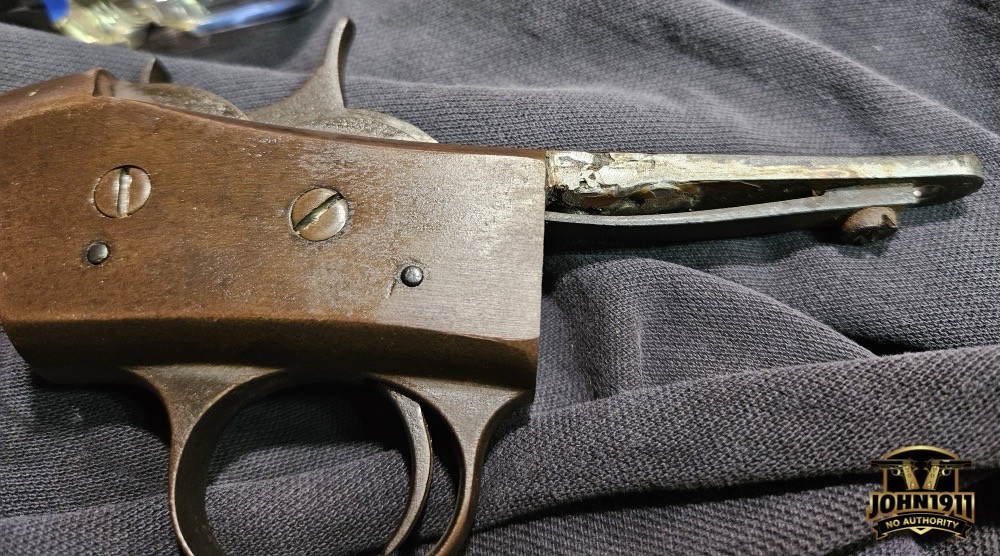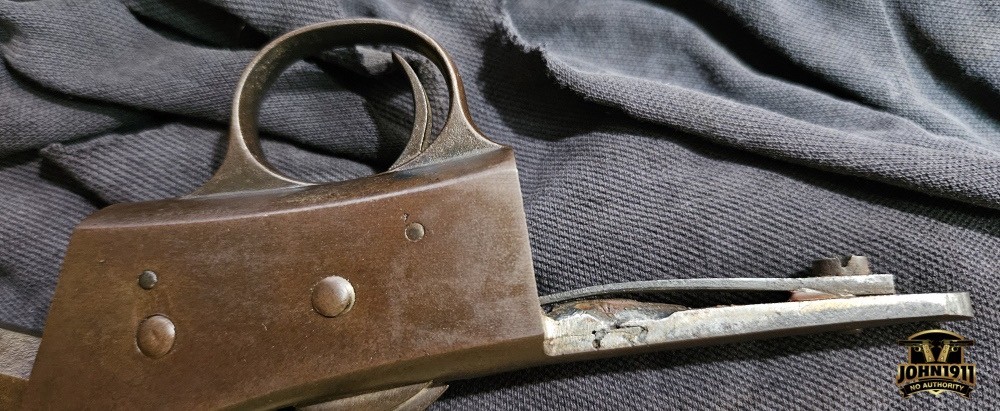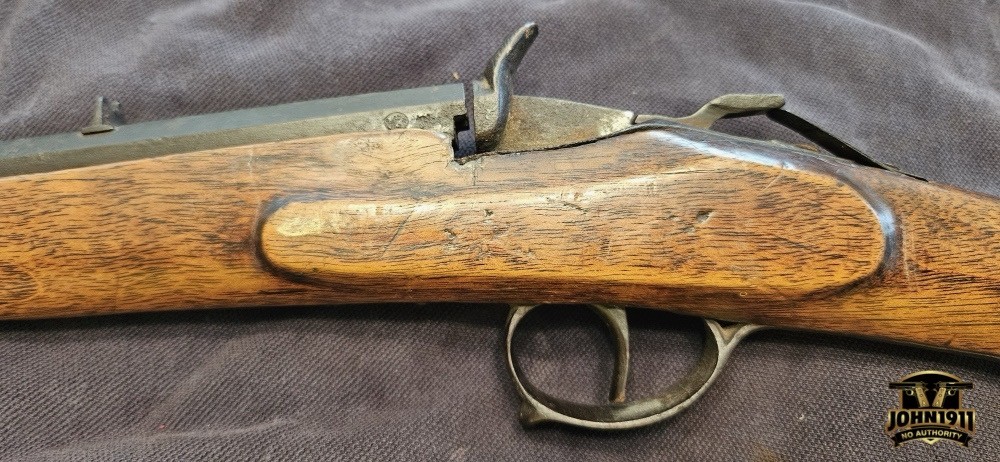I Inherit Two Rifles
My mother passed away recently and my father started to clean out the house in preparation for the day he would go to join her. The guns have been wall hangers in our house from before I was even born. I had played with them, surreptitiously, as a kid but never knew their history.
So What Do I Have?
I learned over the years as I grew older and gained more knowledge about firearms that one of the rifles was a Remington Rolling Block but the other’s identity eluded me. When I inherited them I had a talk with my father about them and he told me that they came from both sides of the family. The Remington was from my father’s side and had been in the family as long as he remembered. The mystery gun was from my mother’s side and had been used by grandfather to hunt squirrels, rabbits and other small game. My father knew nothing more of their history than that.
The Remington Rolling Block
The rolling block was at least identifiable to me. I did not know if it was a knock off by some other company or a genuine Remington. The gun has plenty of “patina” aka rust, muck, gunk, and old oil. I did manage to find the Remington logo on top of the barrel and a serial number and bore diameter on the bottom of the barrel. Research on the internet told me it is a Model 4 Rolling Block that was made between 1890 and 1933. Further research said that in 1900 the model 4 guns were all made with take down ability via barrel removal and a lever or screw. This gun does not have the take down ability so that puts the year of manufacture between the years of 1890-1900.
The caliber given on the barrel is 22. The Remington Model 4 Rolling Block was made in several calibers – 22 short, 22 long, 22 long rifle, 25 Stevens (25-10), 32 short, and 32 long. The gun is obviously a 22 rimfire by the firing pin and the 22 marking but without doing a chamber casting the exact 22 round is unknown. Luckily I have a friend with some Cerrosafe to cast the chamber soon. The years have not been good for the Remington; the chamber is heavily peened from the firing pin during dry firing. The extractor looks like something made by a blind Khyber Pass intern. I assume it is a replacement homemade extractor. I took the stock off the gun to see about taking some of the patina off and preserve the gun. That’s when I found the bigger issue with the gun, the rear upper tang had been broken at some point in the past. The repair was done by sawing a slot into it then peening a piece of steel into the new slot then adding what looks to be a lead based solider. Looking at the tang from the outside the repair was not readily visible but there is a crack there if you look closely. The gun is going back up on the wall after finding that and will be passed along as a wall hanger to the next generation along with its stories.
Mystery Rifle
This rifle appears to be a 22 rimfire as well. The action is a bit bizarre in that the hammer is the bolt. This gun is essentially firing from an open bolt slam fire gun. The sear on the gun is so worn the hammer will no long stay at full cock. The outer surface of the hammer matches the octagonal profile of the barrel and has a raised ridge that runs down the middle of the face to act as a firing pin. The extractor is missing on the gun. There is an axel for the extractor to pivot on in the trigger group and what looks like the remnants of the bottom part of the extractor. Interestingly the stock is in the style of what would look to be a gun with an external lock work like a black powder gun. I assume it was carved to look like the majority of guns from the time when it was made. The trigger guard is also of the black powder fashion.
How the Mystery Rifle Works
The gun is loaded by depressing a locking lever that is notched into the rear of the hammer. While depressing the locking lever, the hammer is withdrawn to full cock. Originally this would have pivoted the extractor back to remove an expended cartridge. The round would then be inserted into the chamber thus making the gun ready to fire. Upon pulling the trigger the hammer would slam down on the rear of the round firing it. The locking lever would pivot into the hammer notch keeping the hammer from flying back opening the chamber under pressure in the shooter’s face. This is not the strongest of lockups so I assume that the gun was designed for the early black powder 22 rimfire rounds.
Markings
The eagle eyed readers might have spotted what looks like some sort of proof mark on the right side of the barrel at the chamber. There is a lot of pitting in this area and the mark is very hard to make out clearly. It appears to be a oval with “LG” or “LC” inside it and a star with a “Z” below it.

I next removed the stock looking for some kind of makers mark. I found what looks like an inverted “L” followed by a “D”. There is also 4 notches cut into the barrel at one of the octagonal ridges. These notches are under the stock so I would not consider them to be something an owner would put on the barrel. There is also what appears to be a crown with “GM” below it.
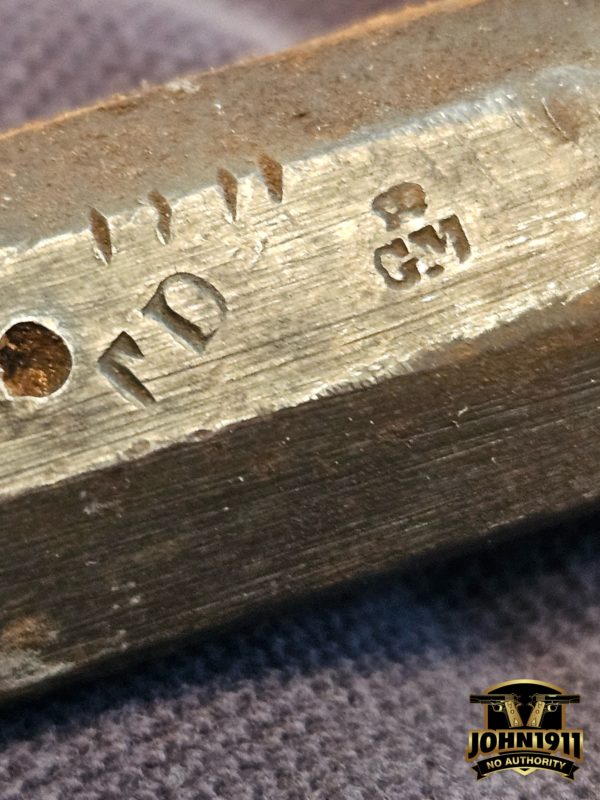
The trigger group metal under the stock also has what looks to be a star with a “Z” under it. The barrel also has a very clear “3” stamped into it that is covered by the stock.
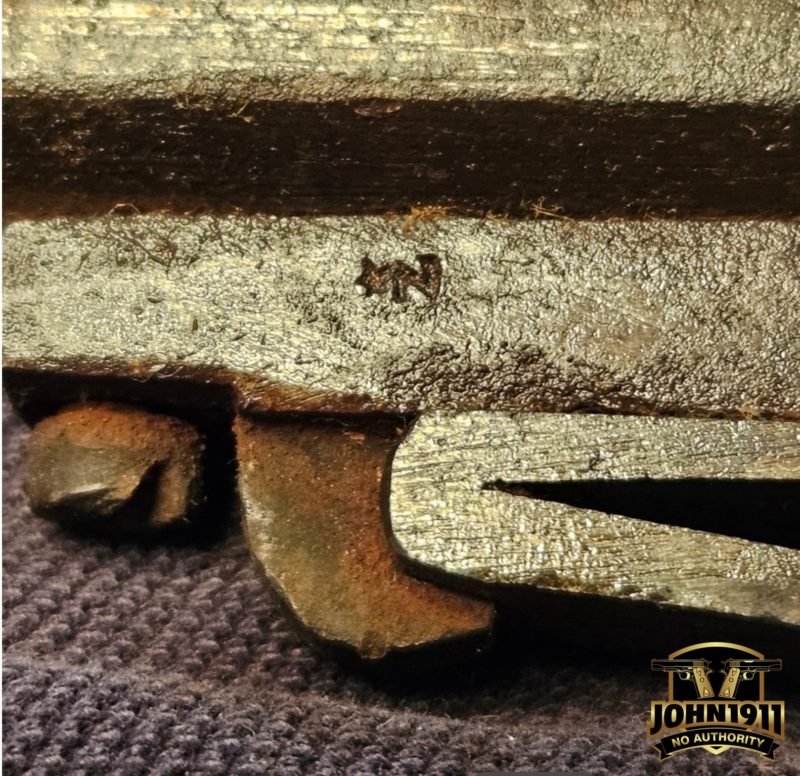

The barrel change in the stock has what looks like four “L” or “I” and then a fifth one stamped at an angle.
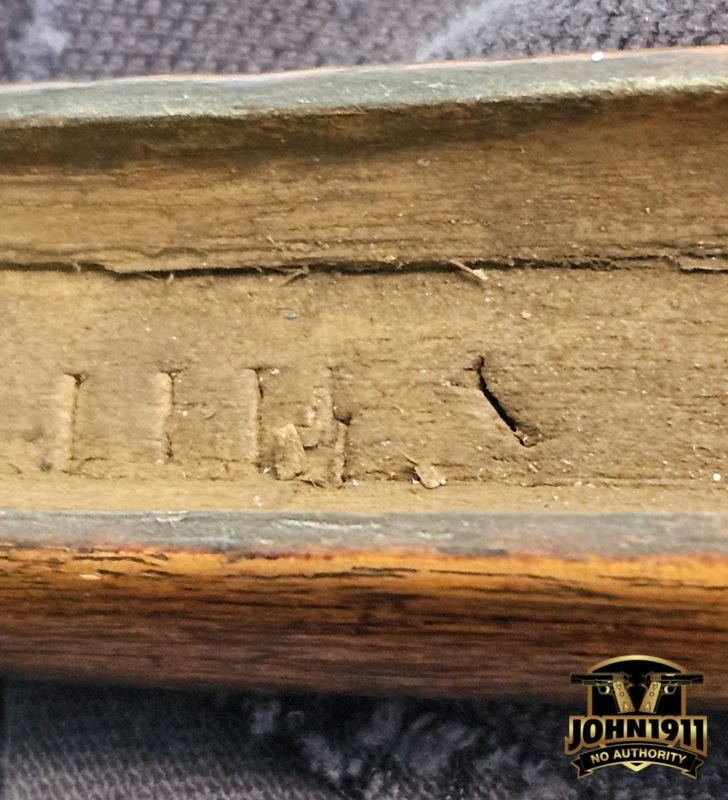
Who made it?
I could not find matching stamps on the internet. I do not have any clue as to what the markings mean. If you have any clues to the rifle’s origin or any of the markings let us know in the comments. It’s going to be a wall hanger since I do not consider it safe to fire from an engineering perspective.
Mongo
John1911.com
”Shooting Guns & Having Fun”
- The Safe is Full Again! - January 7, 2025
- These Old Guns - October 11, 2024
- Expensive Optics Cheap - August 18, 2024




